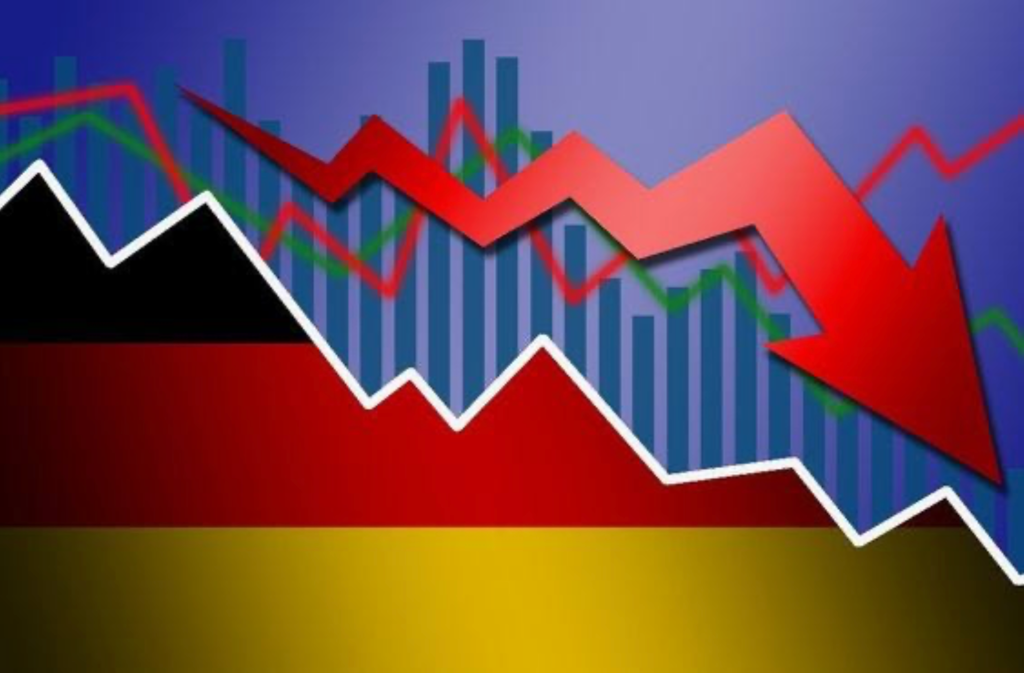By Udheesh Gaddipati
In Parts 1 and 2, we discussed President Donald J. Trump’s effect on the competitiveness and sustainability of the American Economy; in this piece, we will be assessing Trump’s impact on the wellbeing of an average American.
So why is individual wellbeing important? Many mainstream indicators like GDP, inflation, and non-farm payrolls fail to represent the financial well being of individual agents. While it is unequivocally true that the American economy expanded under Donald Trump, a complete economic assessment of his administration must analyze whether the average American benefited from this growth. In fact, one of President Trump’s campaign promises was to help the “forgotten men and women” of America. In 2016 – distancing himself from standard GOP rhetoric – Trump blamed economic hardship on the inequality and the greed of the American elite.
Beyond holding Trump accountable to his campaign promises, the wellbeing of middle and low income classes directly contributes to long term economic growth. A stronger middle class drives consumer spending, investment spending, and business growth.
So did President Donald J. Trump help the average American citizen?
The Middle Class:
While proponents like Sentier Research, The Heritage Foundation, and Trump himself dubiously claim inflation adjusted annual income is up $5,000 for the typical household, oppositional studies claim Middle-class incomes grew at a hampered rate of 2.7% between 2016 and 2018, while growth rate from 2014 to 2016 was at an elevated 5.8%. Providing resolve, the “adjusted estimate” from the Census revealed that while median Income and real wages hit their highest levels in 2019, annual income under Trump’s first two years in office only grew $1,638, or 2.7%, mostly due to a robust economy.

So yes – while President Trump may not be totally responsible – the current Administration has been accompanied by a substantial increase in real median annual incomes. However what proponents of the administration often overlook is the implication of income inequality. Before Trump took office, the top 5% ‘s income grew around 4x faster than middle class Incomes. The consequence of rising inequality: an increased cost of living. As society’s wealthiest compete for goods, the cost of higher education, housing, pharmaceuticals, and even stocks tend to grow faster than the average American salary. This is why studies claim though real wages during the Administration rose, they “effectively” declined as adjusted for cost of living growth, middle class affordability fell 1.3% between 2017 and 2018.
To solve this problem, Trump proposed solutions to lower evictions, healthcare costs, and pharmaceutical costs, yet failed to enact any meaningful legislation. Instead, Trump granted the American people Tax Cuts and a devastating Trade War. A 2019 Congressional Budget Office report estimated that the import taxes (tariffs) reduced the average household’s income by $1,227 destroying American savings. Furthermore, Trump’s tax policy helped perpetuate income inequality, giving larger benefits, loopholes, and cuts to the top 10%.
While President Trump promised tax cuts would result in increased wages and job growth, capital only flowed to the top. The Congressional Research Service corroborates in 2019 that Trump’s tax cuts had a “small (if any)” impact on growth and saw “no indication of a surge in wages.” In fact, Income-tax cuts generated an extra $50,0000 a year for America’s highest earners while $1.35 trillion of cuts went to corporations. This is why despite substantial increases in real wages, over 40% of all Americans remain a single paycheck away from poverty.
Social Support:
Access to affordable healthcare, education, and effective welfare is integral to expanding the middle class. On the issue of healthcare, Trump promised to “terminat[e] Obamacare… and replac[e] it with … great health care at a fraction, a fraction of the cost.” Given 57% of all Americans are unable to cover an unexpected expense of $500 without going into debt, ensuring individuals are medically insured is critical to maintaining agent wellbeing.
Unfortunately, Trump’s assault on the Affordable Care Act (ACA) and simultaneous failure to either amend, reform, or replace the policy with his own healthcare only hurt Americans. A holistic study from the Center on Budget and Policy Priorities found Trump’s assault on the ACA – which included raising premiums on impoverished people, raising work requirements, and making it harder for states to finance medicaid – pushed millions off health insurance. As a result of Trump’s policies, The Kaiser Family Foundation’s survey of health insurance costs found employer-sponsored plans – which cover more than 150 million Americans – increased 12% for individuals and 13% for families between 2016 and 2019. The U.S. Census Bureau data concludes that over 2.3 million people became uninsured during the first three years of the presidency.
Additionally, Trump boasted that his administration was responsible for “lift[ing] 10 million people off of welfare.” While this is quantitatively true when adding up the number of people who were moved off SNAP (Food Stamps), TANF (Temporary Assistance for Needy Families) and Medicaid/CHIP, these trends seemed to have started in 2014 when economic growth was well underway. Crucially, it’s important to note that rather than reforming welfare, Trump made it restrictively harder to qualify, forcing millions more prematurely off these programs.
Farmer Outcomes
President Trump’s EPA appointee Andrew Wheeler – a coal lobbyist – reduced the EPA’s annual rule for the level of ethanol that must be blended into the nation’s gasoline supply. Given 40% of the nation’s crop goes to the ethanol industry, the 15 billion gallon target for corn-based ethanol disappointed the industry as demand for the crop plunged. Additionally, the reduced demand for soy and corn resulting from the Trade War devastated the profitability of smaller farms.

Despite Trump’s efforts to substantially increase government subsidies to American farmers, the rate of farm bankruptcies increased. The distribution of funds disadvantaged smaller farmers as the average payment for the top 10% of recipients was $164,813, while the bottom half of recipients received an average payment of $2,469.49.
Ultimately, did President Donald J. Trump “Make America Great Again?”
For the vast majority of people…. no. When looking at the overall impact of governance in regards to the happiness and wellbeing of individuals, the Social Progress Index and the World Happiness Index – two independent assessments of an individual’s access to basic needs, the protection of personal liberties, access to information, etc – both saw the United States’s score substantial drop between 2017 and 2019.
Mark Blyth, a political economist at Brown University, notes that Trump has only gotten “away with incredible upward wealth redistribution — to him and his class –… [all the while] … maintain[ing] a sense of connection to the people that he’s hurting the most.” Despite having access to countless resources and immense wealth, the last four years have been marked by mediocrity; this is especially painful when one considers Trump’s 2016 promise and potential for greatness. □
Work Cited
- Cover image by Udheesh Gaddipati
- Bach, Natasha. (01-29-2019) “Millions of Americans Are One Missed Paycheck Away From Poverty, Report Says,” Fortune Magazine. Retrieved December 1, from https://fortune.com/2019/01/29/americans-liquid-asset-poor-propserity-now-report/
- Blinder, Alan S. (10-21-2020) “The Trump ‘Jobs Boom’ Is a Convenient Myth – Opinion,” Wall Street Journal, Retrieved December 1, from https://www.wsj.com/articles/the-trump-jobs-boom-is-a-convenient-myth-11603298821
- Center on Budget and Policy Priorities Brief. (02-04-2020), “Trump Administration’s Harmful Changes to Medicaid,” Center on Budget and Policy Priorities. Retrieved December 1, from https://www.cbpp.org/research/health/trump-administrations-harmful-changes-to-medicaid
- Dickinson, Tim. (01-16-2017) “How Trump Took the Middle Class to the Cleaners,” Rolling Stone. Retrieved December 1, from https://www.rollingstone.com/politics/politics-features/trump-covid-response-economy-jobs-taxes-inequality-1080345/
- Dorning, Mike and Catarina Saraiva. (10-31-2019) “Is Trump’s Economy Really Booming? Weak Middle Class Gains Pose 2020 Threat,” Bloomberg. Retrieved December 1, from https://www.bloomberg.com/news/articles/2019-10-31/trump-boasts-on-economy-undercut-by-weak-middle-class-pay-gains
- Goodheart, Jessica. (02-25-2020) “Under President Trump, income growth has slowed across the U.S.,” Newsweek Magazine. Retrieved December 1, from https://www.newsweek.com/income-growth-slowed-across-us-under-donald-trump-1488871
- Goodheart, Jessica. (09-15-2020) “Before COVID, the number of uninsured Americans grew by 2.3 million under Trump, analysis finds,” USA Today, Capital & Main. Retrieved December 1, from https://www.usatoday.com/story/news/health/2020/09/15/census-data-pre-covid-2-3-million-lost-health-insurance-under-trump/5810404002/
- Heeb, Gina. (09-21-2018) “As small U.S. farms face a crisis, Trump’s trade aid flowed to corporations,” CNBC. Retrieved December 1, from https://www.cnbc.com/2020/09/02/as-small-us-farms-face-crisis-trumps-trade-aid-flowed-to-corporations.html
- Jackson, Brooks. (11-6-2019) “Trump’s Shaky $5,000 Boast,” FactCheck.org. Retrieved December 1, from https://www.factcheck.org/2019/11/trumps-shaky-5000-boast/
- Kessler, Glenn. (01-12-2018) “Analysis: Is the Trump tax cut good or bad for the middle class?” Washington Post. Retrieved December 1, from https://www.washingtonpost.com/news/fact-checker/wp/2018/01/12/is-the-trump-tax-cut-good-or-bad-for-the-middle-class/
- McCarthy, Niall, (02-10-2020) “U.S. Farm Bankruptcies Reach Eight-Year High [Infographic],” Forbes Magazine. Retrieved December 1, from https://www.forbes.com/sites/niallmccarthy/2020/02/10/us-farm-bankruptcies-reach-eight-year-high-infographic/?sh=758ea81e7de0
- McCrimmon, Ryan. (07-14-2020) “‘Here’s your check’: Trump’s massive payouts to farmers will be hard to pull back,” POLITICO. Retrieved December 1, from https://www.politico.com/news/2020/07/14/donald-trump-coronavirus-farmer-bailouts-359932
- McNeice, Phyllis (Payscale Human Capital Data). (01-9-2019) “PayScale Q4 Index Shows Real Wages Fell Even Further in 2018,” GlobeNewsWire Newsroom. Retrieved December 1, from https://www.globenewswire.com/news-release/2019/01/09/1682563/0/en/PayScale-Q4-Index-Shows-Real-Wages-Fell-Even-Further-in-2018.html
- Moore, Stephen. (09-29-2019) “Trump’s Middle Class Economic Progress – Opinion,” Wall Street Journal. Retrieved December 1, from https://www.wsj.com/articles/trumps-middle-class-economic-progress-11569786435
- Picchi, Aimee. (01-12-2017) “A $500 surprise expense would put most Americans into debt,” CBS News. Retrieved December 1, from https://www.cbsnews.com/news/most-americans-cant-afford-a-500-emergency-expense/
- Picchi, Aimee. (12-31-2019) “Two years after Trump tax cuts, middle-class Americans are falling behind,” CBS News. Retrieved December 1, from https://www.cbsnews.com/news/two-years-after-trumps-tax-reform-the-middle-class-is-struggling/
- Pitt, David. (07-12-2019) “Trump escapes blame for ethanol policy hurting corn farmers,” Associated Press News. Retrieved December 1, from https://apnews.com/article/28dd29a4e0f7499e94453c26639946c1
- Robertson, Lori. (03-9-2020) “Trump’s Welfare Claim,” FactCheck.org. Retrieved December 1, from https://www.factcheck.org/2020/03/trumps-welfare-claim/
- Tankersley, Jim and Lola Fadulu. (02-20-2020) “Millions of Americans Have Moved Off Assistance. Does Trump Get Credit?,” The New York Times. Retrieved December 1, from https://www.nytimes.com/2020/02/20/business/trump-welfare-poverty.html
- The St. Louis Federal Reserve. “Real Median Household Income in the United States,” FRED Economic Data. Retrieved December 1, from https://fred.stlouisfed.org/series/MEHOINUSA672N
- The St. Louis Federal Reserve. “Real Median Personal Income in the United States,” FRED Economic Data. Retrieved December 1, from https://fred.stlouisfed.org/series/MEPAINUSA672N
- World Happiness Report (2020) https://happiness-report.s3.amazonaws.com/2020/WHR20.pdf






Leave a comment